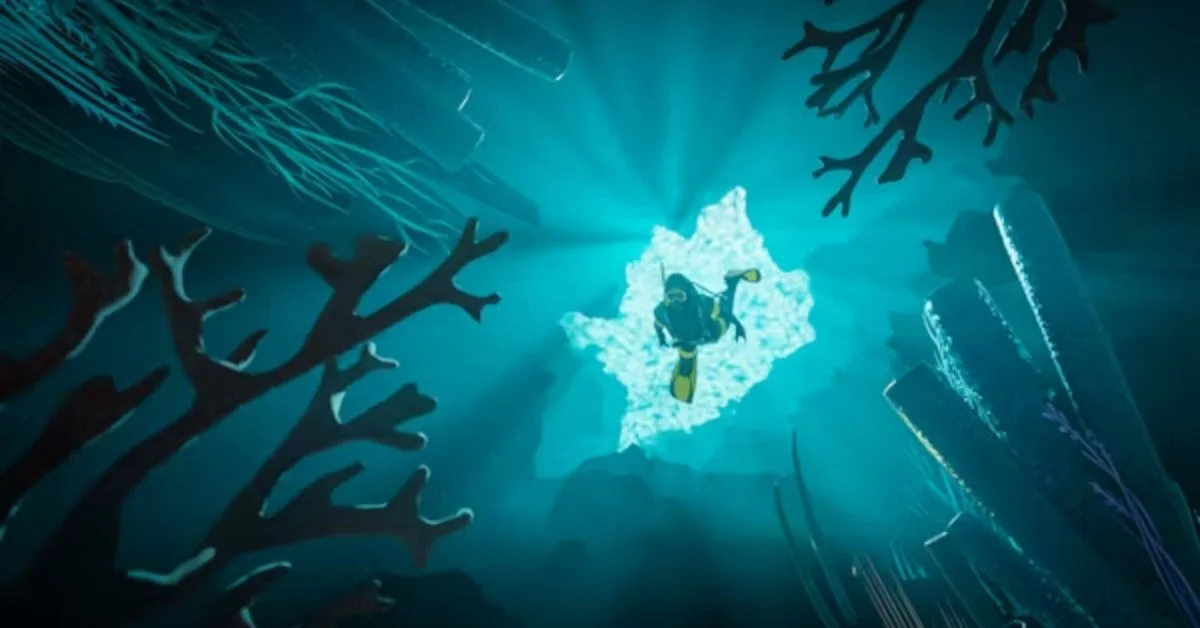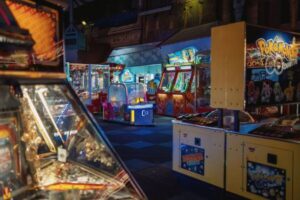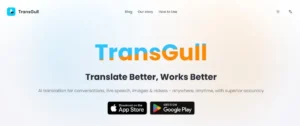If you’ve stumbled upon the term Crystal Explorers, you might be curious whether it’s a science fiction adventure, a children’s book, or a school resource. The answer is: it’s a digital educational game, originally developed to help children aged 7 to 11 develop literacy and science-based critical thinking skills in an engaging, interactive way. But beneath its colorful interface and fantasy setting lies a serious educational tool used in classrooms, homes, and after-school programmes across the UK and beyond.
This article provides a complete look into what Crystal Explorers is, what makes it educational, why it works for children and teachers alike, and how it supports key learning outcomes—particularly in science and English. Whether you’re a parent, educator, curriculum planner, or simply an advocate of digital learning, understanding Crystal Explorers reveals how play and pedagogy can work together effectively.
What Is Crystal Explorers?
Crystal Explorers is a browser-based interactive game designed primarily for Key Stage 2 learners (ages 7–11). It was developed by the BBC as part of its educational Bitesize initiative, aiming to merge digital gameplay with foundational learning objectives. The game takes children on an exploratory journey across multiple levels, during which they must collect crystals while solving puzzles rooted in science literacy and English comprehension.
Gameplay Summary:
- Five characters, each with distinct abilities and knowledge
- Players collect crystals by solving grammar, reading, and science-related challenges
- Vocabulary puzzles, reading comprehension tasks, and sentence structure challenges integrated into each level
- Levels are thematic: desert, jungle, underwater, mountain, and volcano environments
- Scoring system encourages replays, correction of errors, and deeper engagement
It’s not a traditional science game that tests for memorised facts—it is a hybrid of interactive storytelling and curriculum-relevant literacy, encouraging children to apply knowledge in context.
Educational Purpose: Literacy Meets STEM
While Crystal Explorers is framed like an adventure game, its pedagogical goals are rooted in the UK National Curriculum, particularly in these core areas:
1. English Skills:
- Understanding word classes (nouns, adjectives, adverbs, verbs)
- Sentence structure, grammar, and punctuation
- Reading comprehension
- Vocabulary expansion
- Word roots and affixes
2. Science Concepts (Indirect):
- Reading scientific texts
- Understanding information in context (e.g., environmental changes, habitats)
- Applying literacy to interpret scientific meaning
While the game itself doesn’t present scientific experiments or formulas, it teaches children how to read and comprehend science-related material, a key step in developing scientific literacy.
The Five Crystal Explorers: Characters with Purpose
The game centers around five animated characters, each representing different learning traits and cultural backgrounds. This not only encourages inclusivity but also models collaborative learning and knowledge-sharing.
Character Highlights:
- Nisha: A problem-solver and language lover
- Ravi: Quick thinker, excels at decoding clues
- Zack: Logical and methodical, loves patterns
- Ruby: Curious about the natural world
- Maya: Detail-oriented, a fact checker
Each level allows the player to choose which explorer leads the mission. This gamifies the concept of differentiated learning—allowing children to align with the character whose strengths reflect their own.
Design and User Interface
Crystal Explorers features a clean, child-friendly interface with vibrant visuals, simple navigation, and no ads or external distractions. Here’s what stands out:
- Intuitive controls: Keyboard or touchscreen compatible
- Text-to-speech options for early or reluctant readers
- Error correction loops: Encourages learning from mistakes without punishment
- Points and rewards system: Builds persistence and confidence
- Visual themes: Earth-based environments that mimic scientific exploration zones (e.g., rainforests, oceans)
Children are never “punished” for mistakes. Instead, the design encourages a growth mindset—learn through trial, correct, and try again.
How It Fits into the Curriculum
While the game isn’t a substitute for classroom instruction, it fits well within blended learning models. Teachers can use Crystal Explorers:
- As a warm-up or consolidation activity in literacy lessons
- For homework or self-guided learning in digital literacy units
- As part of thematic units on exploration, geography, or reading week
- In assessment-free zones to encourage creative play linked to learning
The BBC’s educator guides (where available) provide tips on how to link game content to broader learning objectives, ensuring that gameplay aligns with intentional learning.
Pedagogical Strengths: Why Teachers Recommend It
1. Engagement
Games are an inherently motivating medium for children. Crystal Explorers takes advantage of this by offering immediate feedback, vibrant settings, and a structured progression.
2. Reading in Context
One of the key challenges in education is helping children apply literacy skills outside textbook formats. This game teaches grammar and reading within a story-based context, which promotes retention and relevance.
3. Safe Environment
Unlike open-world games or platforms with chat functions, Crystal Explorers is contained and moderated. There is no risk of inappropriate content, making it safe for both classroom and home use.
4. Error as Data
Rather than punishing failure, the game uses wrong answers to trigger reflection or re-attempts. This helps children develop confidence and perseverance, crucial traits for science learners.
Limitations: What It Doesn’t Do
While Crystal Explorers is widely praised, it has a few limitations worth noting:
- Not suitable for advanced readers: It targets KS2 level literacy. Older or more advanced students may find it too easy.
- Limited direct science content: While science-themed, it doesn’t teach scientific method, experiments, or theory in depth.
- Browser-based only: The game works best on desktop or tablet; no native mobile app reduces accessibility for some users.
How Parents Can Use Crystal Explorers at Home
Parents can make the most of Crystal Explorers by pairing it with offline learning:
- Follow-up questions: Ask your child about vocabulary or grammar they used in the game.
- Supplement with books: Choose children’s nonfiction or science-themed storybooks that align with the game’s settings (e.g., ocean life, volcanoes).
- Set time goals: Use the game in 15–20 minute sessions for sustained engagement.
Most importantly, play alongside your child occasionally—it helps reinforce learning as a shared, enjoyable activity.
Broader Implications for Digital Education
Crystal Explorers is a case study in effective edtech—where learning is seamlessly integrated into play. Its design reinforces broader trends:
- Gamification of learning: More curricula are integrating game-based modules.
- Interdisciplinary teaching: Combining literacy with science mirrors real-world skill sets.
- Equity through design: Free, accessible platforms like this bridge gaps in access to quality resources.
As digital tools expand in classrooms post-pandemic, games like Crystal Explorers highlight how intentional, curriculum-aligned design can raise educational outcomes.
Future Outlook: What’s Next for Educational Games?
While Crystal Explorers remains a relevant resource in 2025, educational games are evolving rapidly. Anticipated developments include:
- Adaptive learning engines that tailor difficulty in real-time
- Multiplayer cooperative games for peer-to-peer problem solving
- AR and VR versions of science literacy games for immersive learning
- Voice-driven platforms to assist non-readers and children with special needs
Crystal Explorers, though relatively simple, lays the groundwork for this future by building trust in digital pedagogy.
Conclusion
Crystal Explorers is more than just a game—it’s a thoughtful bridge between storytelling, learning, and scientific curiosity. With its structured gameplay, curriculum alignment, and commitment to safe, inclusive engagement, it offers children a meaningful and motivating learning experience.
For educators and parents, it provides a tool that enhances, rather than replaces, traditional instruction. In a world increasingly dependent on digital fluency and interdisciplinary skills, games like Crystal Explorers prove that learning doesn’t have to feel like a chore. It can be an expedition—one crystal at a time.
FAQs
1. What age group is Crystal Explorers designed for?
Crystal Explorers is aimed at children aged 7 to 11, typically corresponding to Key Stage 2 (KS2) in the UK education system.
2. Does Crystal Explorers teach science directly?
Not directly. The game supports science literacy through reading comprehension and vocabulary relevant to scientific topics but does not teach scientific theories or experiments.
3. Is Crystal Explorers free to use?
Yes. As part of the BBC Bitesize educational suite, it is free to access via web browsers on computers and tablets.
4. Can Crystal Explorers be used in classrooms?
Absolutely. Many teachers incorporate it into English or literacy lessons, homework assignments, or enrichment activities. It’s also used in after-school and digital literacy programmes.
5. Are there any accessibility features in the game?
Crystal Explorers includes simple navigation, text-to-speech options, and no external ads or distractions, making it user-friendly for younger children and those with reading difficulties.
For more information, click here.









